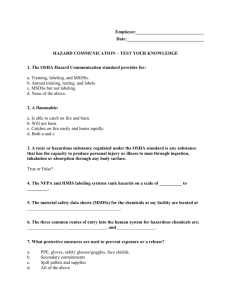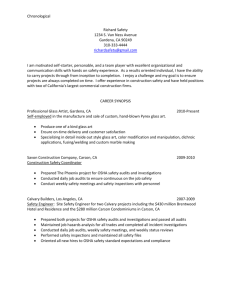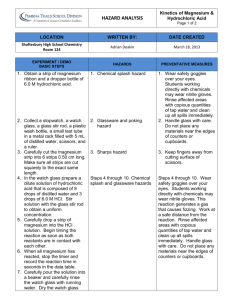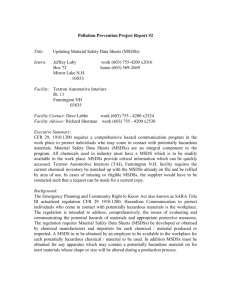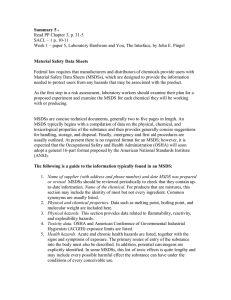Student Questions
advertisement
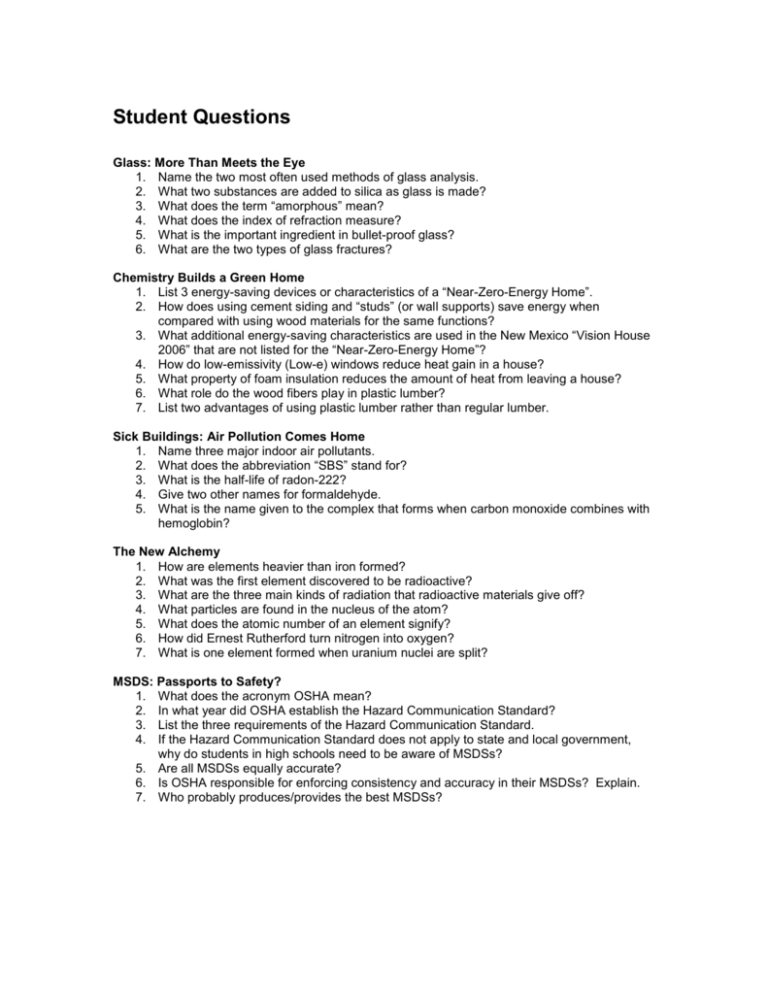
Student Questions Glass: More Than Meets the Eye 1. Name the two most often used methods of glass analysis. 2. What two substances are added to silica as glass is made? 3. What does the term “amorphous” mean? 4. What does the index of refraction measure? 5. What is the important ingredient in bullet-proof glass? 6. What are the two types of glass fractures? Chemistry Builds a Green Home 1. List 3 energy-saving devices or characteristics of a “Near-Zero-Energy Home”. 2. How does using cement siding and “studs” (or wall supports) save energy when compared with using wood materials for the same functions? 3. What additional energy-saving characteristics are used in the New Mexico “Vision House 2006” that are not listed for the “Near-Zero-Energy Home”? 4. How do low-emissivity (Low-e) windows reduce heat gain in a house? 5. What property of foam insulation reduces the amount of heat from leaving a house? 6. What role do the wood fibers play in plastic lumber? 7. List two advantages of using plastic lumber rather than regular lumber. Sick Buildings: Air Pollution Comes Home 1. Name three major indoor air pollutants. 2. What does the abbreviation “SBS” stand for? 3. What is the half-life of radon-222? 4. Give two other names for formaldehyde. 5. What is the name given to the complex that forms when carbon monoxide combines with hemoglobin? The New Alchemy 1. How are elements heavier than iron formed? 2. What was the first element discovered to be radioactive? 3. What are the three main kinds of radiation that radioactive materials give off? 4. What particles are found in the nucleus of the atom? 5. What does the atomic number of an element signify? 6. How did Ernest Rutherford turn nitrogen into oxygen? 7. What is one element formed when uranium nuclei are split? MSDS: Passports to Safety? 1. What does the acronym OSHA mean? 2. In what year did OSHA establish the Hazard Communication Standard? 3. List the three requirements of the Hazard Communication Standard. 4. If the Hazard Communication Standard does not apply to state and local government, why do students in high schools need to be aware of MSDSs? 5. Are all MSDSs equally accurate? 6. Is OSHA responsible for enforcing consistency and accuracy in their MSDSs? Explain. 7. Who probably produces/provides the best MSDSs?
